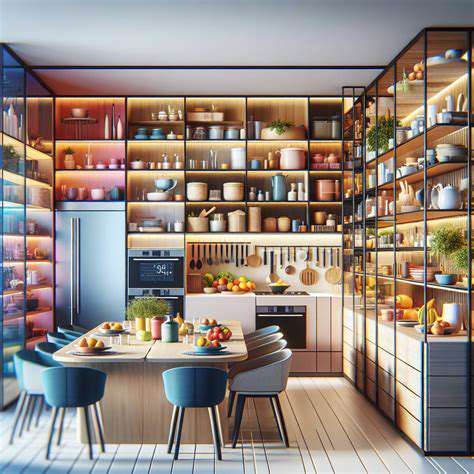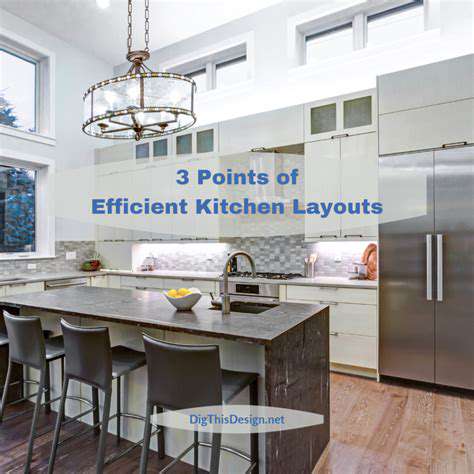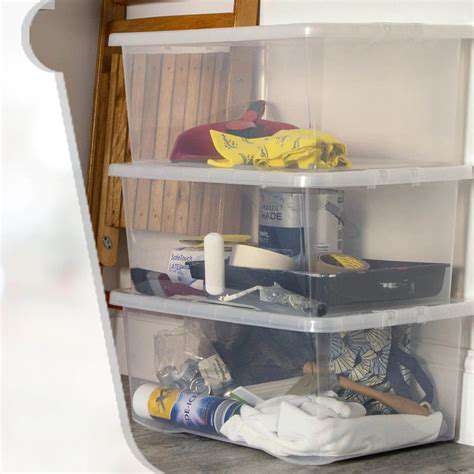How to Organize Your Kitchen Cabinets

Decluttering Your Cabinets: A Comprehensive Guide
Decluttering cabinets can feel like a daunting task, but it's a rewarding process that can significantly improve your home's organization and overall ambiance. Taking the time to tackle this often-overlooked area can lead to a more functional and aesthetically pleasing space. The key is to approach it methodically, focusing on one cabinet at a time to avoid feeling overwhelmed.
Start by emptying the entire cabinet. This allows you to see everything you have and get a clear picture of what needs to go, what can be donated, and what should be kept. This initial step is crucial for effective decluttering and can save you considerable time and effort in the long run.
Assessing Your Belongings
Once everything is out, carefully examine each item. Ask yourself if it's something you truly need, use regularly, or can easily replace. Be honest with yourself about the items you've accumulated over time and whether they still serve a purpose in your life.
Consider items that are broken, damaged, or duplicates. These items often take up valuable space and can be easily discarded or donated. Clearing out these items immediately frees up valuable storage space, making it easier to organize the remaining items.
Don't be afraid to let go of items that are no longer serving a purpose. A good rule of thumb is to keep only items that you use regularly or that hold sentimental value. Everything else can be donated, sold, or discarded.
Organizing for Efficiency
Now that you've decluttered, it's time to organize your remaining items. Consider utilizing different storage solutions, such as shelves, drawers, containers, or even vertical organizers, to optimize space and maximize accessibility.
Group similar items together, such as dishes, cookware, or cleaning supplies, for easy access and visual appeal. This will create a more streamlined and efficient way to manage your belongings.
Label containers and shelves to make finding specific items easier. This will save you valuable time and effort when you need to locate something.
Maintaining the Organization
Establishing a system for maintaining the organization is just as important as the decluttering process itself. Developing a consistent routine for putting things away after use will help prevent the cabinets from becoming cluttered again.
Regularly review the contents of your cabinets to identify any items that are no longer needed or used. This will prevent accumulation and maintain the efficient organization you've established.
Beyond the Cabinets: Extending the Decluttering
The decluttering process isn't limited to cabinets; it can extend to other areas of your home. Consider applying the same principles to drawers, shelves, and other storage spaces. Adopting a holistic approach to decluttering can dramatically improve your home's organization and overall living experience.
By consistently decluttering and organizing, you can create a more functional and aesthetically pleasing home environment. This creates a more comfortable and relaxing atmosphere for you and your family.
Utilizing Vertical Space and Innovative Storage Solutions

Maximizing Visual Appeal
Effective use of vertical space is crucial for creating visually appealing and engaging content. By strategically placing elements and allowing for sufficient white space, you can guide the reader's eye through the information in a clear and organized manner. This visual hierarchy enhances readability and overall aesthetics, improving the user experience.
Consider how different elements interact visually. A well-designed layout that utilizes vertical space effectively can make complex information easier to digest, drawing attention to key points and enhancing the overall impact of the content.
Optimizing Readability
Properly utilizing vertical space directly impacts readability. Sufficient spacing between lines, paragraphs, and sections allows the reader's eyes to comfortably scan the text, reducing eye strain and fatigue. This improved readability significantly contributes to user engagement and comprehension.
By strategically increasing the vertical space between elements, you create visual pauses that break up dense blocks of text, making it easier for the reader to absorb the information. This careful consideration of vertical space is paramount for creating a positive reading experience.
Enhancing Information Hierarchy
Vertical space can be a powerful tool for establishing a clear information hierarchy. By using varying amounts of space between sections, you can effectively emphasize certain points or ideas, drawing attention to key information and guiding the reader through the content. This visual hierarchy ensures that the most important information is prominent and easily accessible.
Improving User Experience
A well-structured layout that utilizes vertical space effectively can significantly enhance the user experience. By creating visual breathing room and a clear flow, you can make the content easier to navigate and more enjoyable to consume. This improved experience leads to higher user engagement and satisfaction.
A user-friendly design that utilizes vertical space efficiently is essential for retaining user attention and promoting interaction. Providing sufficient white space and strategic spacing between elements contributes to a more aesthetically pleasing and intuitive user experience.
Considering Design Principles
Integrating vertical space effectively requires a keen understanding of design principles. Careful consideration of margins, spacing between paragraphs, and the use of whitespace are vital for creating a visually appealing and balanced design. Understanding these principles allows for the creation of a cohesive and engaging visual narrative.
A well-executed design will not only improve the visual appeal but also enhance the overall impact and effectiveness of the content. Implementing these design principles in the context of vertical space utilization can profoundly improve the user experience.
Maintaining Your Organized Kitchen Cabinets
Decluttering and Assessing Your Current Setup
Before diving into organizing, take a deep breath and declutter your kitchen cabinets. This initial step is crucial for creating a fresh perspective and identifying what you truly need and use. Set aside items you haven't used in the past six months, considering whether they are damaged, expired, or simply duplicates. This thorough decluttering process will free up valuable space and make organizing much more efficient. Don't be afraid to let go of items that no longer serve a purpose in your kitchen life. This will create a foundation for a more effective and functional cabinet organization strategy.
Once everything is decluttered, carefully assess your current cabinet setup. Measure the dimensions of each cabinet to understand the available space. Identify any obstacles or limitations that might affect your storage solutions. Consider factors like the height and width of items, and how they can be effectively stacked or placed within the cabinet. By understanding your current setup, you can choose the most suitable organization methods and maximize storage capacity.
Utilizing Vertical Space and Innovative Storage Solutions
One of the most effective ways to maximize your kitchen cabinet space is to utilize vertical space. Think about installing adjustable shelves or stackable containers to store items from tall to short. This will help you make the most of every inch of your cabinets and prevent items from taking up valuable horizontal space. Vertical storage solutions can significantly increase your storage capacity, making your kitchen feel less cluttered and more organized.
Explore innovative storage solutions beyond the traditional approach. Consider using clear containers to easily identify contents. These containers are not only visually appealing but also help you see what you have without having to open every cabinet. Utilize drawer dividers to keep smaller items such as utensils or spices neatly organized within drawers, preventing them from becoming jumbled and difficult to locate. These solutions can dramatically improve the workflow and efficiency of your kitchen.
Employing pull-out shelves or drawers can greatly enhance the accessibility and efficiency of your kitchen cabinets. These specialized organizers allow you to easily reach items stored at the back of the cabinets, reducing the need to rearrange everything to retrieve specific items. By making your storage more accessible, you'll find it easier to keep your kitchen organized and avoid clutter.
Categorizing and Labeling for Easy Access
Categorize items based on their function and type. Group similar items together, such as pots and pans, baking supplies, or spices. This method allows for easy retrieval when you need a specific item, reducing the time spent searching within your cabinets. By categorizing your items logically, you establish a clear system that makes finding what you need straightforward and efficient. A well-defined categorization system will help maintain order and prevent your kitchen from becoming chaotic.
Labeling your containers and shelves is an essential step in maintaining your organized kitchen cabinets. Clearly labeling what is stored in each container or shelf will save you time and effort when you need something specific. This will also help others, such as family members or house guests, quickly locate items without difficulty. Consistent labeling ensures that everything has its designated place, preventing items from getting misplaced or lost.
Maintaining a Routine for Long-Term Organization
Establish a routine for maintaining your organized kitchen cabinets. Make it a habit to put items away immediately after use. This will prevent clutter from accumulating and will help you keep your kitchen organized in the long run. By developing this habit, you will prevent items from getting scattered and misplacing them. This will significantly reduce the time you spend searching for things, saving you time and energy in the kitchen.
Regularly check your cabinets for any unnecessary items that have accumulated over time. This step is crucial for preventing clutter and maintaining a consistent organized system. By frequently reviewing your cabinets, you can ensure that only essential items are kept, maintaining the tidiness of your kitchen. Regular checks help you identify items that are no longer needed, allowing you to remove them and maintain a clean, organized space.










